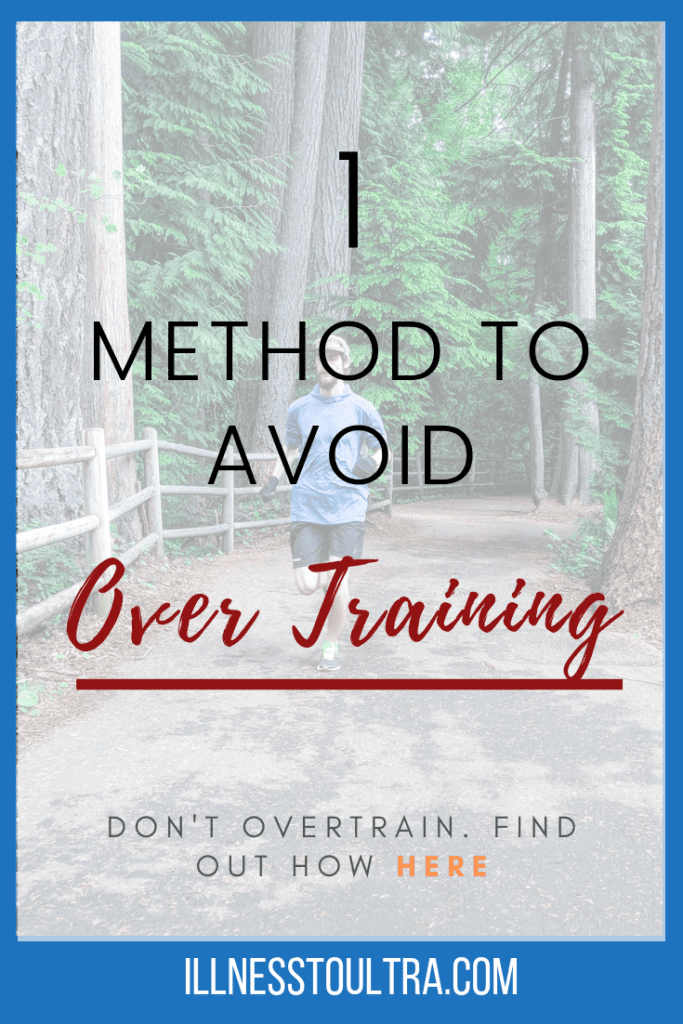As explained in the About Me page, I often find I push myself far too much in my training runs, resulting in overtraining.
Every training run turns into some sort of challenge, whether it’s upping my average pace, running my fastest kilometer, or the demon that is Strava segments.
You can’t tell me that when you post a segment near the top of the leader board, you aren’t proud. But this all becomes part of the overall problem.
Most of your training should not be completed at a consistently intense pace; it should be a balance between slower runs and your maxed-out 100%.
I want to tell you how to address this issue by using one method to avoid overtraining.

Can Heart Rate Help Regulate Your Pace?
There are various methods of regulating energy output during a run. Monitoring pace, breathing, mentally perceived expenditure, or even something borrowed from the cycling world, power output. All of these are excellent practices, but I want to look at something different.
I decided to explore a tried and tested method of heart rate (HR) monitoring while running. I’m not saying this is better than any other method out there, but it offers you the opportunity to break down your energy output in numbers that will guide you. It also gives hard and fast rules to ensure that you do not overtrain.
Breaking down Heart Rate Into Zones
In most literature, HR training is broken down into percentage zones of the maximum HR.
Training runs are then based on these zones to give the correct intensity for the activity. Breaking down the activity helps planning your training immensely because it makes the analysis and energy expenditure agnostic to the environment you are training in, although this is disputed – I will talk about this later.
Pace should no longer be a figure to analyze during the activity, which is great because then you minimize the possibility of overtraining, a problem I often had. Although comparing your pace over time can give you some indications of fitness, it is still subject to abnormalities such as terrain, climate, current health, etc.
Calculate Your Heart Rate Zones
The first thing to do is to work out your heart rate or each zone. There is no easy way of doing this, but there are simple approximations we can use.
Resting HR
First, find your resting heart rate. Over a couple of days, take your heart rate right after waking up and before you start rushing around for the day. The average of this gives your resting HR.
Mine is about 50 bpm which is relatively low – so do not be alarmed if yours is higher than this. On average people have resting HRs of around 60 – 100 bpm.
The resting heart rate is also a useful metric to keep track of as it is a relatively good indicator of fitness and health. The lower your resting HR the fitter you are. Always be aware of other serious heart issues causing a radical change in resting heart rates and also illness-based changes.
Max HR
Now we need to find your maximum HR. A crude example of this is to do 211 – (0.64 * your age). Therefore mine is :
211 – (0.64 * 30) = 192
Zones
We can use the calculation to work out the HR zones, but it’s just a bit easier to jump onto this website and enter your information. HR Zones (I have no affiliation with the site)
Now we have our zones, let’s see what this means. I’ll use my figures as examples.
| Zone | Percentage of Max HR | Activity Info | My HR (bpm) |
|---|---|---|---|
| 1 | 50 – 60 | Warm-up / Cooldown | 121 – 135 |
| 2 | 60 – 70 | Aerobic exercise fat burning | 135 – 149 |
| 3 | 70 – 80 | Aerobic to Anaerobic Crossover | 149 – 164 |
| 4 | 80 – 90 | Anaerobic Carb burning | 164 – 178 |
| 5 | 90 – 100 | Full tilt 10 – 20-second max | 178 – 192 |
Previously, when I was consistently becoming injured, I was pushing myself into zone 4 continuously.
Always pushing your body causes a lot of stress on a regular occurrence – and as you can imagine, this will end in failure somehow. Zones 4-5 can take time to recover from – not to mention the inflammation on the joints, muscles.
Keeping a steady pace and not pushing too much becomes even more critical when fighting any chronic illness since inflammation is a typical reaction and will likely be a large part of your life down the road. Adding more to this “inflammation pyramid” is not wise.
So ensuring that we mix up our training zones are a must for long-term fitness. The following training runs are defined to help schedule your running log.

Training Sessions Based on Heart Rate
Base building
I split this term into two categories. Base building low (BBL) and base building high (BBH). These efforts are restricting yourself to zones 1 and 2, but I split this even further to say I will concentrate on staying towards the crossover of zones 1 and 2 for BBL and towards the top end of zone 2 for BBH – dependent on the distance.
Base building training does precisely what it says; it is building your base. Building your base is priming your body to run longer distances, increasing the muscle memory of running, and improving the efficiency of your fat metabolism.
You can now decide to do a BBL 10km one day and be more confident that you won’t be too fatigued the next day and, maybe, you can even throw in a training session the next day.
Threshold
A threshold run is designed to improve your anaerobic abilities.
You want to be aiming for the top end of zone 3 to improve your anaerobic threshold.
A threshold run usually consists of a short blast, when you are practicing at near race pace, but without the big adrenaline kick.
Interval
There are lots of configurations of intervals, but they all consist of pushing into zones 4 and 5 and then dropping back down to zone 2 intermittently.
The variable pacing will improve your anaerobic abilities along with building a little more strength into your runs, which is essential when wanting to add pace into your running life.
Rest Day
It would be advisable to be relatively sedentary for the rest of the day and also take it easy if you have any activity planned the next day. Adversely, we now know if we do a 5km threshold run we will likely push our limits too far and ultimately need rest and recovery for days after.
Heart Rate Drift
One thing I notice when I first started to use this method was that throughout my runs – my HR began to drift, even though my perceived effort and pace were still stable. So to counter any drift I would monitor my HR over the first 10 minutes of both my BB and threshold runs and stick with that pace.
Keeping a constant pace will confirm that you have reached a stable state, and you can then attempt to keep the same perceived output throughout the remainder of the run, (or keep it at roughly the same pace).
I’ll be honest I am not entirely sure that this is the right idea, but it is what is working for me right now. More information on this can be found here.

What’s Next?
Now that you have a good knowledge of types of runs based on the HR monitoring method. We can go forward and create a training plan, so be sure to check that out.
Like this post? Pin it!

